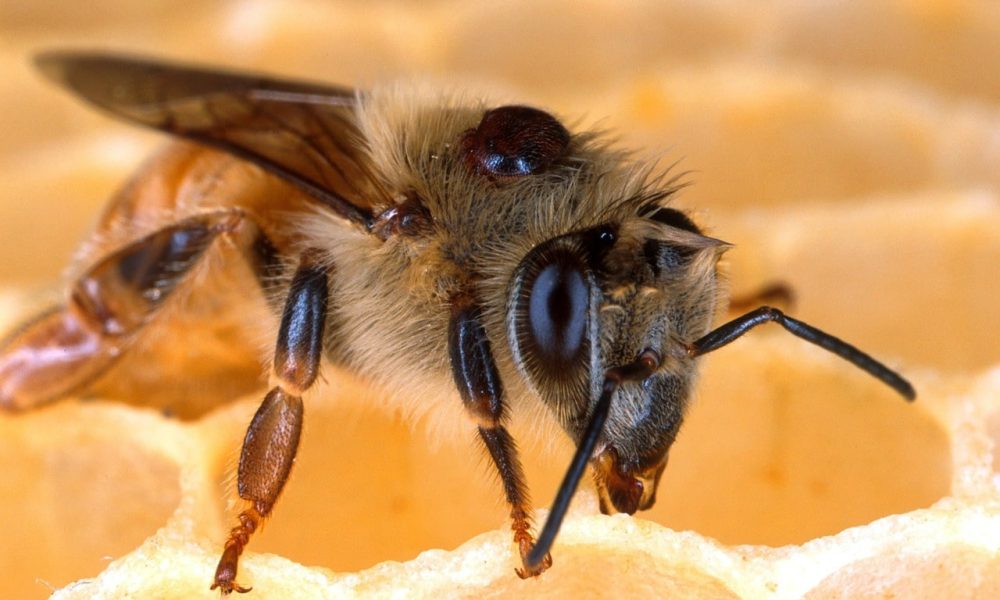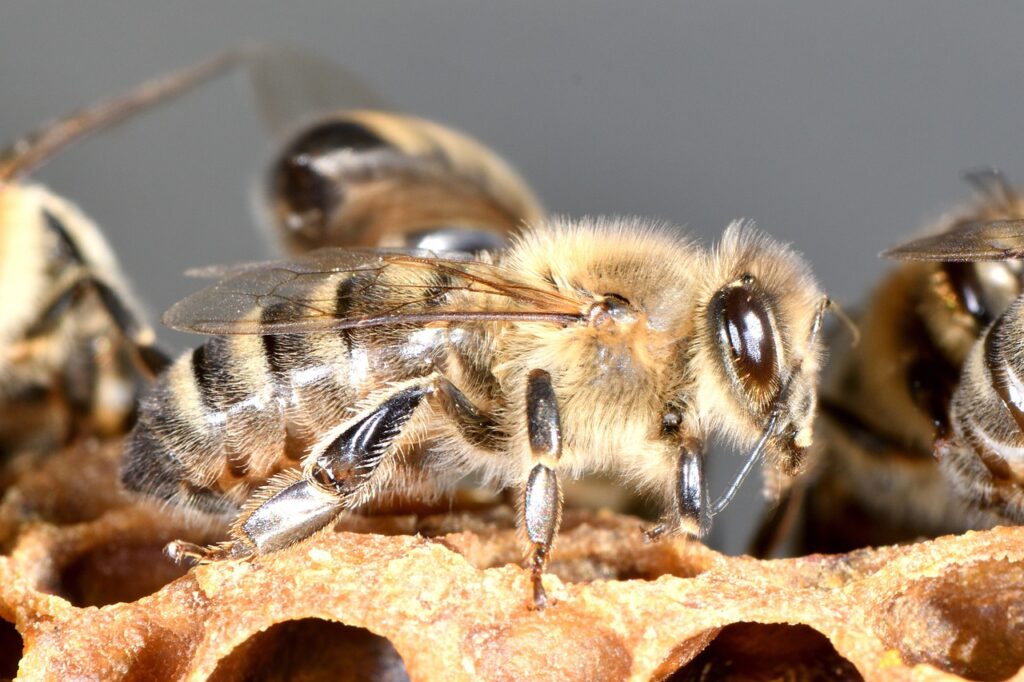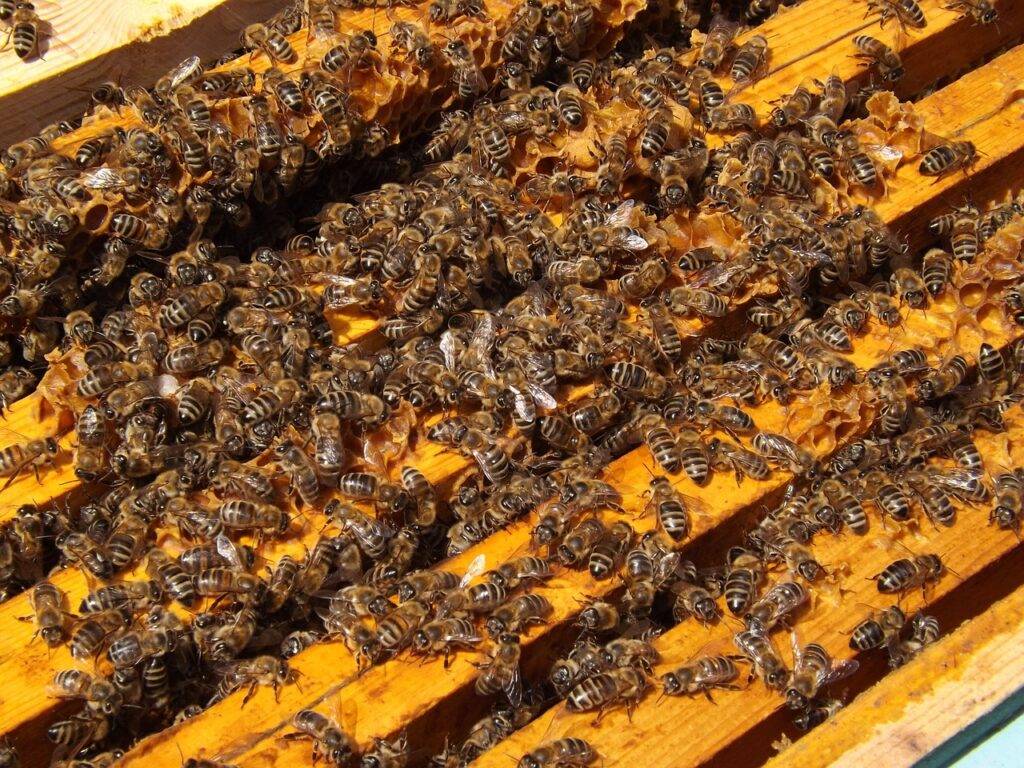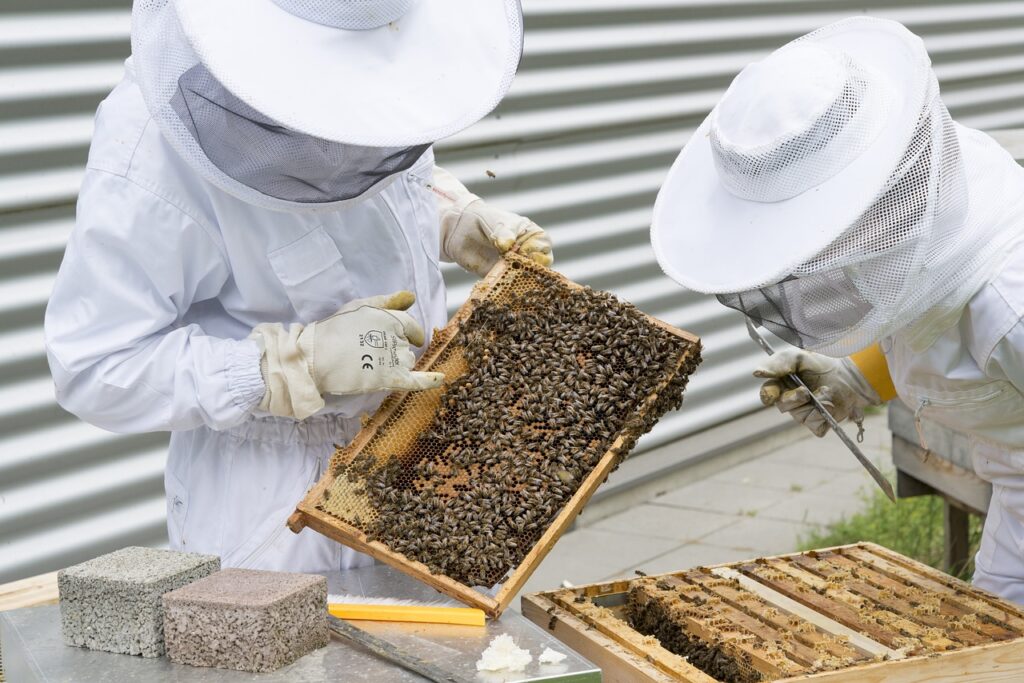
Did you know there are different types of Honeybees? Well, there are. And World Class Wildlife Removal wants to educate people about the importance of honeybees. You see, for more than 9,000 years, honeybees have provided humans with honey and beeswax. And they pollinate many plants too. Not only do humans enjoy the sweet taste of honey, but their wax can be pretty helpful. For centuries humans have made candles, soap, and cosmetics such as lip balm of the waxy substance.
According to GreenPeace,
“Honey bees — wild and domestic — perform about 80 percent of all pollination worldwide. A single bee colony can pollinate 300 million flowers each day. Grains are primarily pollinated by the wind, but fruits, nuts and vegetables are pollinated by bees. Seventy out of the top 100 human food crops — which supply about 90 percent of the world’s nutrition — are pollinated by bees.”
And that is why we believe there are a few things to get to know before you can fully appreciate the life of the honeybee and why we should cherish them.

Bumble or Honey?
Many think of a bee as the round yellow and black striped bumblebee. And that is the bumblebee, but not the honeybee. The honeybee is smaller, long, and thin comparatively. Roughly the size of a paper clip, honeybees are a yellowish-orange color with black stripes. Covered with pale hairs, they have six legs and a barbed stinger. Also, honeybees are entirely herbivorous, getting their nutrition from the pollen and nectar of flowers. These widely misunderstood insects fly around with their transparent wings, collecting food for use back at the hive.
It is most important to note that honeybees are a vital part of horticulture. They pollinate the many fruits, vegetables, and other plants humans and other animal species need for survival. Honeybees originated in Europe, but the varieties in the Americas are from several types and mutations.
- The honeybees make the wax they use to build hives.
- They make the ooey-gooey honey.
- And they live in a hive with the colony and a queen.
The Honeybee Hive Colony
Each bee in the colony has its specific purpose and is critical to the survival of the colony. Here are the three roles played in the bee colony.
The Queen Bee
First and foremost, let’s get to know the essential member of the colony. The Queen honeybee is a bit larger, at 5/8 to ¾ inches long. Her stinger is smooth, and her abdomen is long and pointed. The single Queen of each hive has only one vital job, and that is to lay eggs. And she may lay up to 2000 eggs in a single day. Then, once that Queen dies, the workers will get busy preparing a new Queen in a unique process. The workers will feed one larva a diet of “royal jelly” to enable the worker larvae to turn into a fertile Queen bee. Additionally, the Queen can direct the activity of the hive with chemicals she produces; she is quite impressive, indeed.
Worker Honeybees
The smallest of the caste, adult worker honeybees, are usually ½ to 5/8 inch long, and they are the only honeybees we see out in the open. They are the females of the hive who are not fertile. The worker bees look for food, build the hive, produce the royal jelly, tend to the Queen, and provide protection for the hive. Additionally, they do the cleaning and circulate the air with the beating patterns of their wings. The food they retrieve is pollen and nectar from flowers.
Drones
The larger and more stout with no stinger, these male bees are called the drones of the colony. They are around 5/8 inches long and are the third class in the bee colony. And, their only job is to mate with the Queen. Drone bees are not capable of feeding themselves nor escape their pupae. So, worker bees do the work for them. Several hundreds of drones will live in a colony in the spring and summer months. There, they will perform their duties, followed by periods of rest and eating. Some will also take turns patrolling the drone congregation areas. But when winter comes, these drones are often put out for the winter.

Honeybee Behavior
Honeybees are known to be social and cooperative with one another. And, they are pretty adaptable too. During the summer months, the bees will complete all their hunting and gathering of nectar and pollen. Then when winter comes, they live on stored honey and pollen as they gather in a ball to keep warm. In the spring, the hive will once again be swarming with new bees ready to learn the process of hive keeping.
Honeybees are defensive when invaders approach. First, they will merely guard the entrance of the nest. Then, if needed, they will sting, but only once. The sting produces a pheromone that warns other bees of the impending danger. And then the honeybee will die.
Five Honeybee Types and Locations
The planet is fortunate to have over 20,000 various types of bees worldwide, and they have been there for millions of years. However, today, there are only seven living types of honeybees. Indeed, they are an exciting insect worth preservation and additional study.
Western Honeybees: Yes, these are the most widely domesticated and distributed bee species in the world. Their colonies are large and were initially in hollowed-out dead trees. They have been bred for more than 5,000 years to be domesticated. All this, while the aggressive behavior has been bred out with honey production remaining the priority.
Originating from Europe, Western Honeybees are common in the USA, South East Asia, and Australia. However, due to selective breeding, many subspecies exist today. The Italian Bee is the most prevalent subspecies, surviving the Ice Age in the warmer climate of Italy. Even today, this bee does not tolerate a cold environment well at all.
Giant Honeybees: Giant Honeybees can be seen in South East Asia and are a larger variety than other species. Under hanging trees and rocky cliffs, they build their giant honey hives. However, humans have been unable to domesticate these bees in hives.
Red Dwarf Honeybees: Red Dwarfs have a wide distribution in South Asia, and they have unique defensive features. Because their nests are open and more exposed to predation than nests in tree cavities, they are on alert at all times. These bees are critical to local agriculture and are proactively encouraged in many countries.
Black Dwarf Honeybees: This variety came out of the last Ice Age well-adjusted to a cold climate where they thrived in the United Kingdom, Germany, and Scandinavia. This honeybee has bred with the fruitful Italian bee, which turned it towards aggressive behavior. Besides, it is rare to find a pure variety of this bee.
Eastern Honeybees: Coming from South East Asia, Eastern Honeybees are small bees and produce considerably less honey. Unfortunately, they carry varroa mites to other types of honeybees that don’t have thousands of years of experience dealing with these pathogens.

How to Remove the Honeybees Hives from Your Property
There is no denying that honeybees greatly benefit the environment when in the care of a beekeeper or deep in the forest. But if a bee colony decides your backyard tree is an excellent place to build a new hive, you have a big problem on your hands. What’s more, if anyone in your family or neighborhood is allergic to bee stings, the hive could seriously put them at risk.
Now, it may be tempting to think you can spray your hive away, but this is not a good solution. Additionally, some bug sprays are illegal to use on bees. But your local wildlife removal company knows which ones are safe for use.
And suppose you don’t know of a local beekeeper who will take the hive away. In that case, the most humane and environmentally friendly way to remove an unwanted honeybee hive from your home or property is to call a professional. They will know how to contact the local beekeepers willing to adopt the hive. If there are none in your area, the wildlife experts will remove them to a wilderness location, taking the threat away from your home and family.
One other thing to consider is that every trace of the hive must be gone from the area. If any honey is left behind, it could attract other unwanted wildlife or insects, depending on where you live.
You can take part in stopping the global decline of all types of honeybees by having the hive professionally removed and relocated. Then the bees can continue their essential environmental work.
Avoid Attracting Honeybees to Your Property
There are a few things homeowners can do to keep the bees out of trees and off homes. Consider the following things on your property.
- Remove any access to sugars, foods, and water that may be attracting bees.
- Try not to plant flowers near areas frequently accessed by the family. Doorways, decks, mailboxes, shed doors, and sidewalks should not have flowers that will attract bees.
- Keeping your lawn free of white clover and flowering seeds that would attract the bees is also essential.
- When homeowners sprinkle cinnamon around the hive, it will annoy the bees. Then they will look for a new place to live in a week or so, and it won’t harm the bees.
- Add bee repelling plants like Eucalyptus, Mint, and Citronella into your landscaping plan.
Suppose these methods have failed, and you have a growing hive and colony in a dangerous place? The best protection you can offer your family is to call World Class Wildlife Removal.
You can keep your home and family safe from the sting of a honeybee while preserving the honeybees our planet needs to thrive.
Our professionals have the knowledge and equipment to ensure your property is safe and those bees don’t come back.
Call World Class Wildlife Removal, so you don’t have to live with unwanted honeybees or other wildlife in or near your home.
